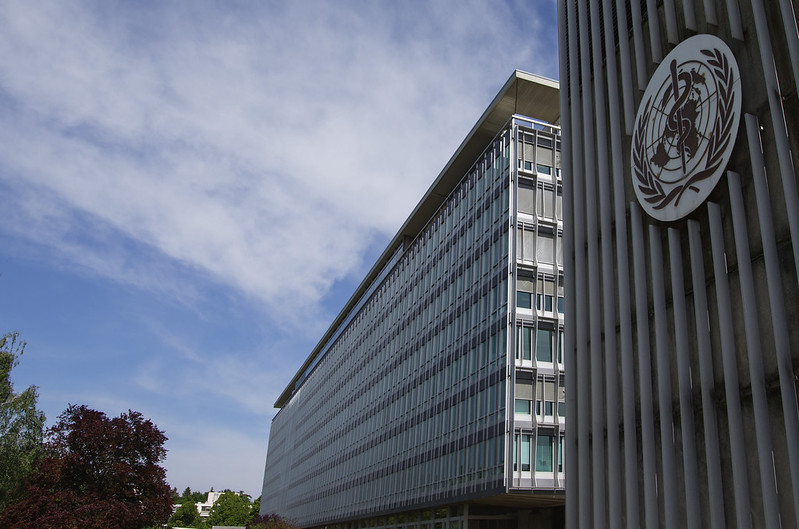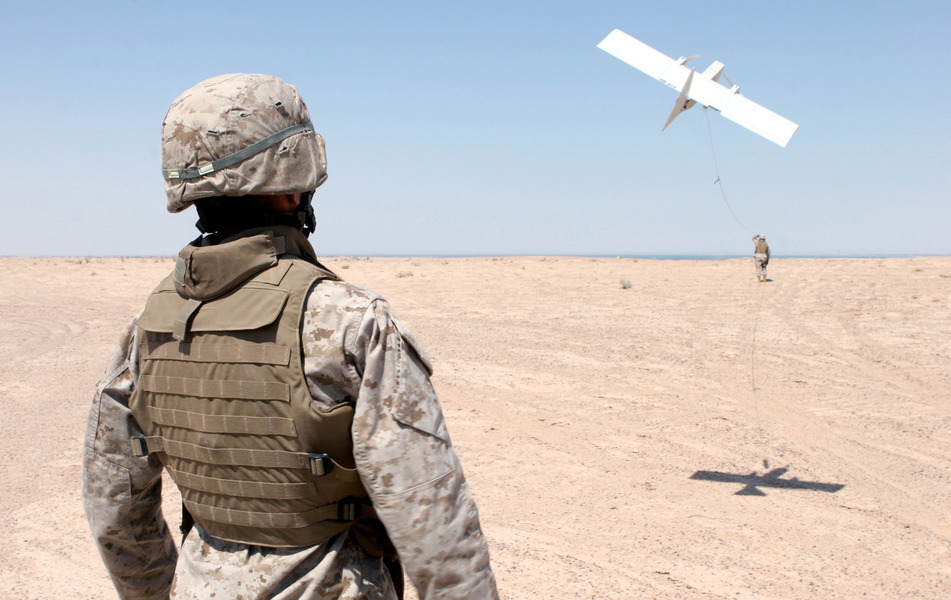No Nation Can Fight Coronavirus on Its Own
Infectious diseases were the first global problem that nation-states realized they could not solve without international cooperation. The question is whether the countries will work together in combating the 2019 novel coronavirus.

Published by The Lawfare Institute
in Cooperation With

When family game night kept devolving into fights and hard feelings, the hobbyist game designer Matt Leacock set out to create a board game with a frightening antagonist that would unite even the most fiercely competitive players. After trying several alternatives, Leacock chose an unexpected motivator for cooperation: an emerging infectious disease outbreak. His game, Pandemic, is now a bestseller.
What’s true in board games is true in real life as well: Infectious diseases were the first global problem that nation-states realized they could not solve without international cooperation. The question is whether the 2019 novel coronavirus, which the World Health Organization (WHO) recently designated a public health emergency of international concern (PHEIC), will inspire the same cooperative response—even among nations that are otherwise rivals, like the United States and China.
On Dec. 31, 2019, the Chinese government alerted the WHO of an outbreak of a novel coronavirus in the city of Wuhan. In just six weeks, that virus has already spread to four continents and 26 countries. As of Feb. 11, it has caused more than 43,000 laboratory-confirmed cases; 1,018 deaths; and a near-shutdown in China’s economy, the world’s second largest.
Microbes like this novel coronavirus are a good motivator for nations to work together. Infections pose a particular threat to populations without prior exposure and immunity, they inspire visceral dread, and they result in economic losses when epidemics disrupt international trade and travel. Yet it was not always so. For most of human history, plagues, parasites and pests were a domestic affair. Quarantine was the principal means by which nations contained the microbes that were brought by invading armies and the passengers, both human and vermin, on trading ships and caravans.
Those isolation measures proved ineffective, however, against the six pandemics of cholera that swept the United States, the Middle East, Russia and Europe in the 19th century. A terrifying disease that struck seemingly healthy people, cholera killed tens of thousands in the cities of Europe and the United States—and, very likely, many more in India, where the pandemics originated. The economic costs of uncoordinated quarantines hurt nations and merchants alike.
In 1851, European states gathered for the first International Sanitary Conference to discuss cooperation on cholera, plague and yellow fever. That convention, and those that followed, led to the first treaties on international infectious disease control and—in 1902—the International Sanitary Bureau, which later became the Pan American Health Organization. These international initiatives were the early models for later agreements and agencies on other transnational concerns, such as pollution, the opium trade and unsafe labor practices.
Microbes have continued to inspire episodes of cooperation among even bitter rivals. The WHO, the United Nation’s first specialized agency, was created in 1946 in response to the horrors of World War II. Its early days were devoted to international campaigns against the great scourges of that era, such as malaria, smallpox and tuberculosis. At the height of the Cold War, the smallpox immunization campaign motivated the United States and the Soviet Union to join forces in an effort that succeeded in eradicating the disease in 1980. In El Salvador, an international vaccination campaign against pediatric infections led to a pause in the country’s 14-year civil war for the sole purpose of immunizing children.
The authority that WHO Director-General Tedros Ghebreyseus used to declare the 2019 novel coronavirus a PHEIC is itself a product of the global response to severe acute respiratory syndrome (SARS) in 2003. Specifically, Ghebreyseus relied on the International Health Regulations (IHR), a binding international treaty and the successor to WHO’s International Sanitary Regulations and the international sanitary conventions of the 19th century. Previous iterations of the IHR failed because states often delayed reporting disease outbreaks to the WHO and other nations, out of concern that states would impose unduly strict travel restrictions harming the trade tourism and reputation of the reporting nations. But the SARS pandemic demonstrated the importance of early outbreak detection and reinvigorated the long-moribund effort to revise the IHR.
The 2005 revision of the IHR requires states to report to the WHO, within 24 hours, unusual or unexpected public health events that might become an emergency of international concern. The revised IHR empowers the WHO director-general to decide on the basis of that notification and information from nonstate actors whether to declare that serious disease event to be a PHEIC (Art. 12). That PHEIC authority is rare among international organizations in that it endows the WHO director-general with the ability to generate and guide international diplomatic, economic and political responses to extraordinary events that threaten states, even over the objections of those states most directly affected by that event (Arts. 12, 49). The revised IHR also includes provisions analogous to those in World Trade Organization (WTO) law, recognizing that nations retain the sovereign right to impose trade and travel restrictions—provided that those restrictions are based on science and WHO guidance and are no more burdensome than necessary for the public health risk in question (Art. 43). And it empowers the WHO director-general to inform and influence how states use trade and travel restrictions by issuing outbreak-specific guidance on science-based measures that will not interfere unnecessarily with public health response activities in other nations (Art. 15).
Laudable acts of international cooperation have followed the issuance of the PHEIC on the novel coronavirus on Jan. 30. On Feb. 5, Ghebreyesus requested $675 million to help poorer countries to deal with an outbreak in case China cannot contain the 2019 novel coronavirus, stating, “Our message to the international community is invest today, or pay more later.” On Feb. 7, the United States announced it would provide $100 million and is sending experts to join the WHO-led response team in China. Ireland has provided 500,000 euros to the WHO’s emergency appeal to respond to the coronavirus, and the governments of India, Japan, South Korea and Vietnam have also offered donations and assistance to China. The European Union has mobilized 10 million euros for research on the coronavirus. As of Feb. 7, almost two dozen other nations had donated medical supplies for epidemic prevention and control. This week, scientists, public health agencies, research funders and ministries of health are gathering at the WHO to produce a global research agenda for the novel coronavirus and to agree to a road map for international collaboration on accelerating development of diagnostic tests, vaccines and medicines.
But many nations have also taken steps at odds with this international cooperation. The WHO reports that 72 nations, including the United States, have imposed restrictions on travel from China, including mandatory quarantines for Chinese nationals, temporary border closures and flight bans. These actions are responding to the fact that the epidemic still appears mostly limited to China: As of Feb. 11, 42,638of the 43,114laboratory-confirmed cases of 2019 novel coronavirus were in mainland China, as were all but two of the deaths. These trade and travel restrictions have helped bring the world’s second largest economy to a near-halt as China weathers the virus.
Many of these travel restrictions may conflict with the requirements of the IHR. The official WHO guidance on the 2019 novel coronavirus suggests only two entry restrictions for travelers: screening their temperature and providing them risk communication materials on the virus and its symptoms. This WHO guidance is not itself binding under international law but in this case builds on substantial evidence that the travel bans currently imposed by many nations are ineffective in stopping the spread of outbreaks of emerging infections. Bans such as these undermined the 2009 H1NI outbreak response and spurred mistrust and violence in West Africa’s Ebola outbreak in 2014. Many travelers circumvent such requirements by traveling to third-party countries, and restrictions have a negative impact on the economies of affected countries and their trading partners, deterring future reporting of outbreaks.
The WHO has so far been accommodating toward travel-restricting states. The WHO Draft Strategic Preparedness and Response Plan acknowledges that:
measures that restrict the movement of people may prove temporarily useful at the beginning of an outbreak to allow time to implement preparedness activities, and to limit the international spread of potentially highly infectious cases. In such situations, countries should perform risk and cost-benefit analyses before implementing such restrictions, to assess whether the benefits outweigh the drawbacks.
The WHO has few tools to address states acting irrationally in outbreaks beyond dialogue, information exchange and patience. Unlike the WTO, the IHR does not have a compulsory dispute mechanism with enforcement power. Instead, the parties are encouraged to “settle the dispute through negotiation or any other peaceful means of their own choice.” If the dispute is unresolved, the parties may bring it before Ghebreyesus under Article 56 of the IHR.
It is too early to project whether the trajectory of the current epidemic of the 2019 novel coronavirus will take hold and spread independently elsewhere. There is much we do not know yet about how easily the virus spreads or its severity. But there is reason to think that the scale of this coronavirus outbreak and the likelihood of epidemics of the virus occurring outside China may inspire more cooperation than even the five previous occasions that the WHO designated as international public health emergencies: the H1N1 influenza pandemic (2009), the re-emergence of polio in several nations (2014), the Ebola outbreak in West Africa (2014), the Zika virus outbreak (2016) and the Ebola virus outbreak in the Democratic Republic of Congo (2019).
In a little over one month, the coronavirus has more than five times the number of laboratory-confirmed cases (43,114 as of Feb. 11) than the outbreak of SARS did in four months (8,096). The novel coronavirus has already spread to at least 26 countries, far more than the current outbreak of the Ebola virus in the Democratic Republic of Congo, its predecessor in West Africa in 2013-2015, or during the resurgence of polio in Afghanistan, Nigeria and Pakistan in 2014. The mortality rate for known cases of the novel coronavirus has been about 2-3 percent, deadlier than the Zika virus or the 2009 H1N1 swine flu.
As Ghebreyesus said in announcing the emergency designation on the novel coronavirus, “We don’t know what sort of damage this virus could do if it spreads in a country with a weaker health system.” Implausibly, Indonesia is still reporting zero cases of the novel coronavirus despite hundreds of tourists from Wuhan traveling to Bali in January. If the current outbreak spreads to Indonesia, which has a woefully underfunded health care system, or with Chinese workers returning from the Lunar New Year holiday to Africa or South America, the coronavirus may take hold in poorer nations. It will be difficult for any country to protect itself in the ensuing pandemic.
Unfortunately, this 2019 novel coronavirus outbreak is not a game like Pandemic. It is deadly and real, but it provides the same lessons that Leacock identified. A frightening novel contagion is a cause for solidarity, not self-interested, unscientific travel safeguards or shameful speculation by U.S. government officials on the economic gains to be had from the misery of rivals. A global action plan is needed now to coordinate surveillance and case investigation in the current outbreak; to incentivize the development of vaccines and antiviral medications; and to invest in the international architecture needed to prevent, detect and respond to future outbreaks.
Perhaps a pandemic of novel coronavirus, if it occurs, would be a sufficiently frightening antagonist to force international cooperation, even at a moment that otherwise has proved inhospitable to global governance. If so, this novel coronavirus will do what climate change, tariff threats and the prospect of nuclear proliferation on the Korean peninsula could not: force nations to work together.


.jpg?sfvrsn=82a6ee72_5)


